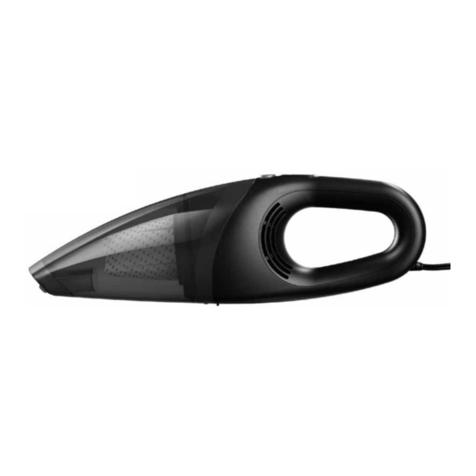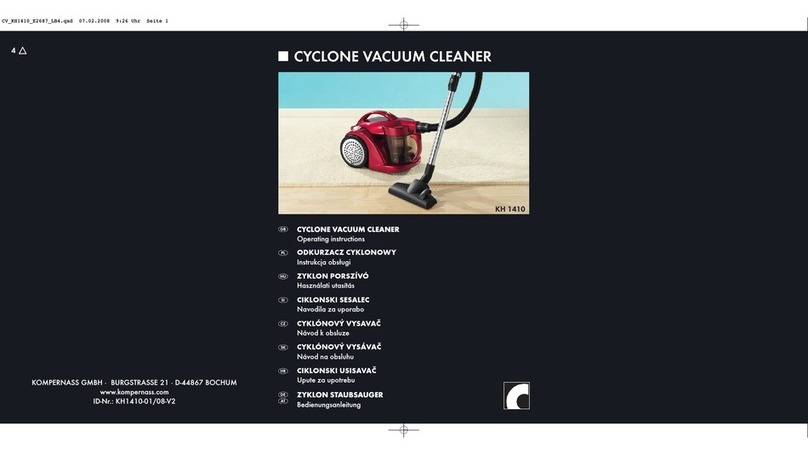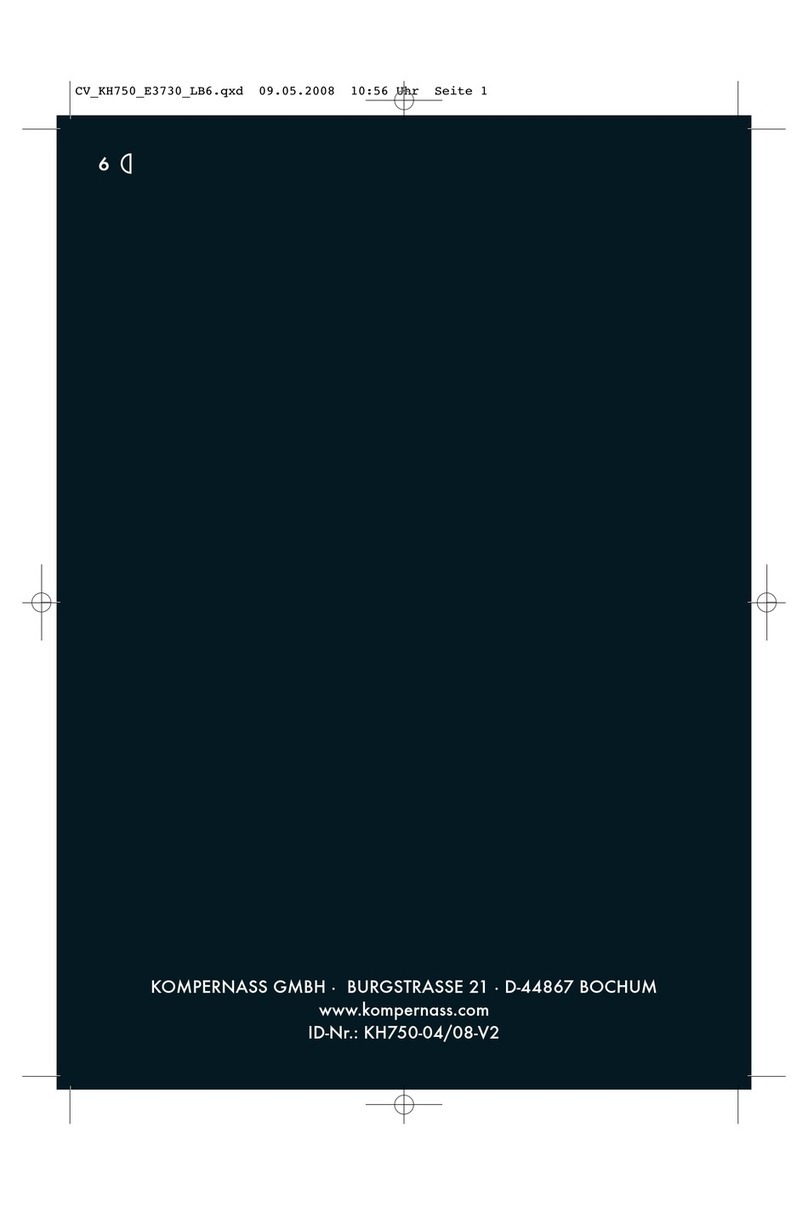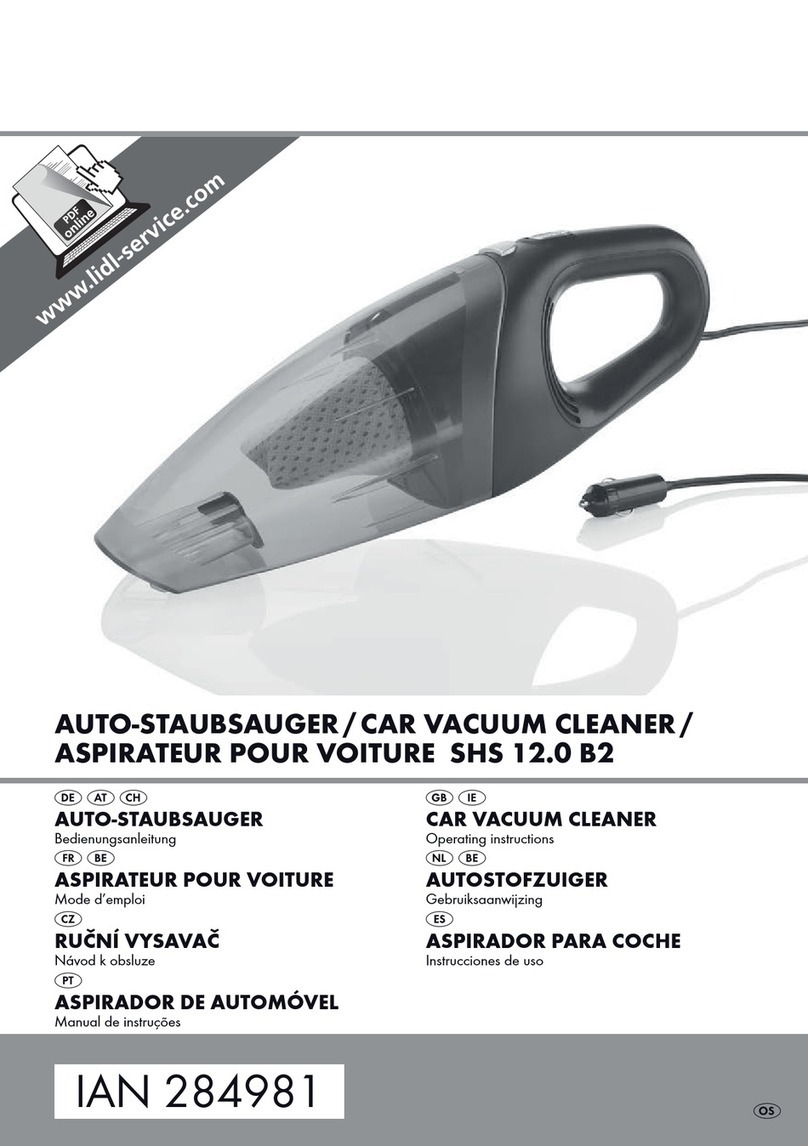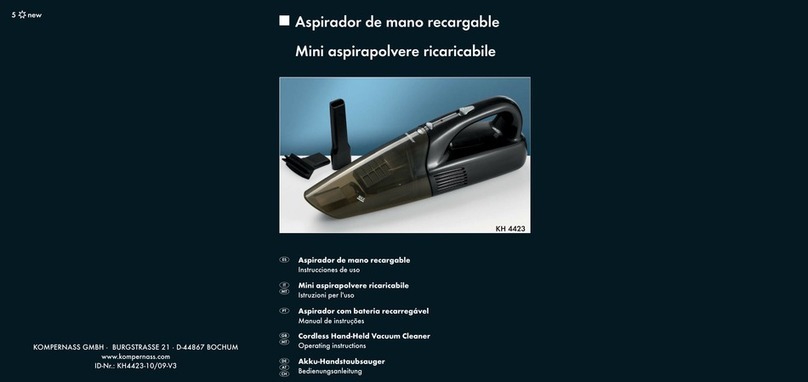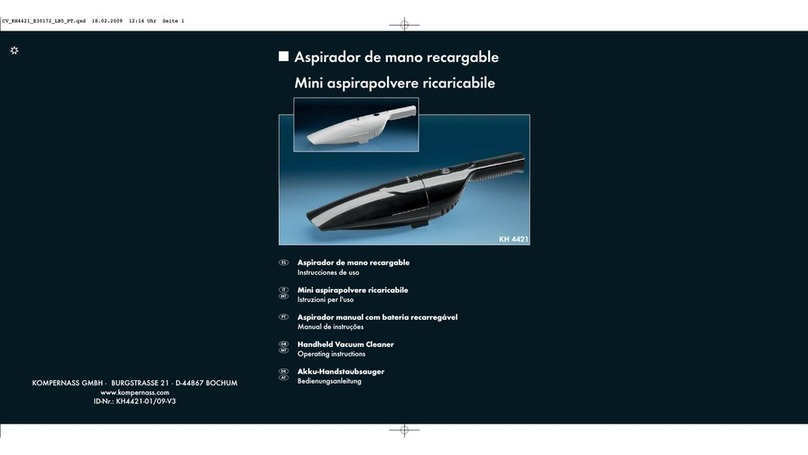
HS 12.0 B2 BL GB│IE│NI │ 5 ■
Switching On /Off
♦ Insert the 12 V plug into the 12 V socket/
cigarette lighter socket of the vehicle.
♦ To switch the device on, press the ON/OFF
switch forwards into the Iposition.
♦ To switch the device off, press the ON/OFF
switch back into the 0position.
♦ Pull the 12V plug out of the 12V socket
after use.
NOTE
► If you going to vacuum for a long period, we
recommend that you carry out the cleaning
with the engine running.
Servicing and cleaning
The device requires no maintenance.
CAUTION
♦ Before you clean the device itself, pull the
12V plug out of the 12V socket, other-
wise there Is a risk of electric shock
♦ Clean all the housing with a soft, dry cloth.
Never use liquids or cleaning agents, as they
may damage the device.
♦ For the best possible performance, you should
empty the dust container immediately after
use and when the suction power drops.
♦ Press the unlocking button and take the dust
container out of the housing .
♦ Take out the dust filter . You will be able to
clean the dust filter better if you detach it from
the end seal. To do this, hold the end seal firmly
and twist the filter off carefully anticlockwise
(bayonet fitting). Rinse out the dust filter
thoroughly in cold water and allow both parts
(filter and end seal) to dry completely. Attach
the filter back on to the end seal.
♦ Empty the dust container completely.
♦ Carefully replace the dust filter back into
the dust container . Never use the vacuum
cleaner without the dust filter in place.
♦ Attach the dust container carefully back
on to the housing and ensure the two parts
engage.
CAUTION
► The front nozzle must be free and unob-
structed at all times. Blockages can lead to
overheating and damage to the motor.
Disposal
The packaging is composed of environ-
mentally-friendly materials that can be
disposed of at a local recycling centre.
Note the labelling on the packaging and
separate the packaging material
components for disposal if necessary. The
packaging material is labelled
with abbreviations (a) and numbers (b)
with the following meanings:
1–7: Plastics;
20–22: Paper and cardboard;
80–98: Composites.
Do not dispose of electrical
devices with the household
rubbish!
In accordance with European Directive
2012/19/EU, worn out electrical devices must
be collected separately and taken for environmen-
tally compatible recycling.
Contact your local refuse disposal author-
ity for more details of how to dispose of
your worn out electrical devices.
